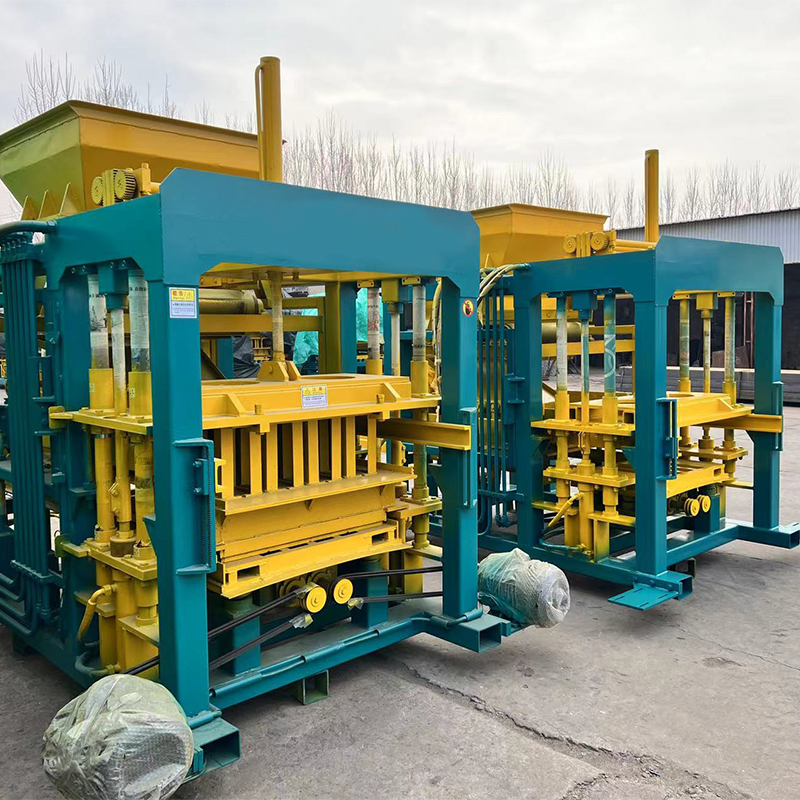
Title: **Revolutionizing Concrete Block Production: Technological Solutions for Full-Automatic Block Machine Remote Diagnostics**
Introduction:
In the ever-evolving landscape of construction technology, the integration of automation has proven to be a game-changer. Full-automatic block machines have become a cornerstone in modern concrete block production, streamlining the manufacturing process and enhancing efficiency. To further elevate the capabilities of these machines, the implementation of remote diagnostics has emerged as a pivotal technological solution. This article explores the significance of remote diagnostics in full-automatic block machines, its benefits, and the technological advancements that make it possible.
I. **The Rise of Full-Automatic Block Machines:**
Full-automatic block machines have revolutionized the concrete block production industry by automating tasks that were once labor-intensive and time-consuming. These machines can produce a wide variety of concrete blocks, bricks, and pavers with precision and speed. As the demand for these products continues to rise, manufacturers are seeking ways to optimize the performance of full-automatic block machines, and remote diagnostics present a promising avenue for achieving this goal.
II. **Understanding Remote Diagnostics:**
Remote diagnostics involve the use of advanced technology to monitor, analyze, and troubleshoot machinery from a distant location. In the context of full-automatic block machines, this means that operators and technicians can assess the machine’s performance, identify issues, and even implement solutions without being physically present at the manufacturing site.
III. **Benefits of Remote Diagnostics for Full-Automatic Block Machines:**
a. **Minimized Downtime:**
One of the primary advantages of remote diagnostics is the significant reduction in downtime. Traditionally, when a machine malfunctioned, it required on-site inspection and troubleshooting, leading to extended periods of inactivity. With remote diagnostics, technicians can assess the situation in real-time, pinpoint the issue, and prescribe solutions promptly, minimizing production interruptions.
b. **Cost Savings:**
Reduced downtime directly translates to cost savings. By addressing problems swiftly and efficiently, manufacturers can avoid the expenses associated with prolonged machine idle time, emergency on-site visits, and potential repairs resulting from unresolved issues.
c. **Enhanced Efficiency:**
Remote diagnostics empower operators to fine-tune machine settings and parameters without physical intervention. This capability allows for on-the-fly adjustments, optimizing the machine’s performance and ensuring that it operates at peak efficiency throughout its lifecycle.
d. **Predictive Maintenance:**
Through continuous monitoring, remote diagnostics enable the implementation of predictive maintenance strategies. By analyzing data trends and machine behavior, technicians can identify potential issues before they escalate into major problems. This proactive approach extends the lifespan of the equipment and prevents unexpected breakdowns.
IV. **Technological Solutions Enabling Remote Diagnostics:**
a. **Internet of Things (IoT):**
The foundation of remote diagnostics lies in the Internet of Things (IoT), where sensors and devices are interconnected to gather and transmit data. Full-automatic block machines equipped with IoT-enabled sensors can provide real-time information on various parameters, such as temperature, vibration, and pressure, allowing for comprehensive monitoring.
b. **Cloud Computing:**
Cloud computing plays a crucial role in remote diagnostics by serving as a centralized platform for storing and analyzing data. Machine-generated information is securely stored in the cloud, accessible to authorized personnel from anywhere in the world. This facilitates timely decision-making and collaborative problem-solving.
c. **Machine Learning and Artificial Intelligence (AI):**
Machine learning algorithms and AI capabilities enhance the diagnostic process by learning from historical data and predicting potential issues. These technologies can identify patterns, anomalies, and correlations in the machine’s behavior, enabling more accurate diagnostics and proactive maintenance.
d. **Remote Access and Control Systems:**
Full-automatic block machines are now equipped with sophisticated remote access and control systems. These systems allow operators and technicians to remotely log in to the machine’s interface, monitor its status, and make adjustments as needed. This level of control fosters a rapid response to changing production requirements and troubleshooting needs.
V. **Challenges and Considerations:**
While the benefits of remote diagnostics for full-automatic block machines are substantial, it’s essential to acknowledge and address potential challenges. These may include concerns related to cybersecurity, data privacy, and the need for skilled personnel to interpret diagnostic information accurately. Manufacturers must implement robust security measures and provide adequate training to ensure the successful integration of remote diagnostics into their operations.
VI. **Conclusion:**
The integration of remote diagnostics into full-automatic block machines marks a significant leap forward in the realm of construction technology. As the industry continues to embrace automation and connectivity, these technological solutions pave the way for more efficient, reliable, and sustainable concrete block production. Manufacturers investing in these advancements not only position themselves at the forefront of innovation but also contribute to the evolution of construction practices worldwide. The era of full-automatic block machines, empowered by remote diagnostics, promises a future where precision meets productivity on an unprecedented scale.
